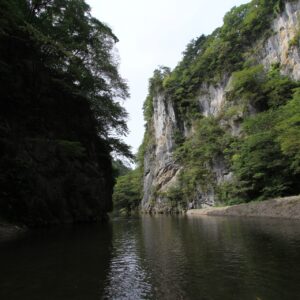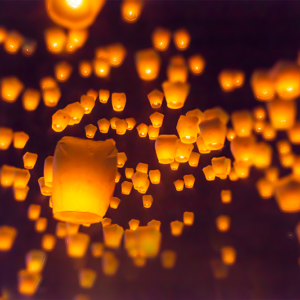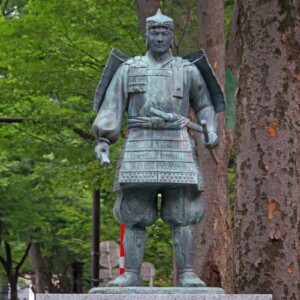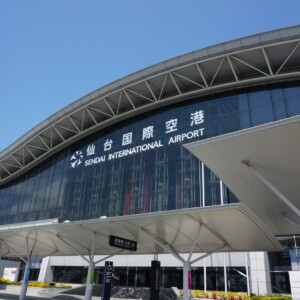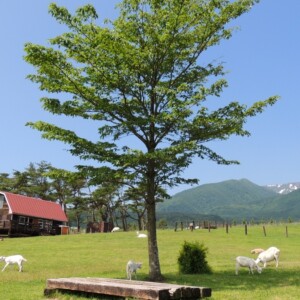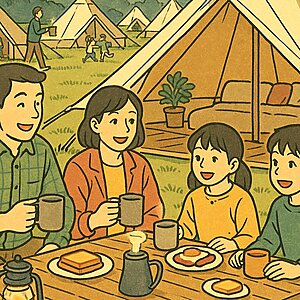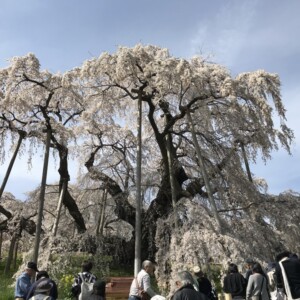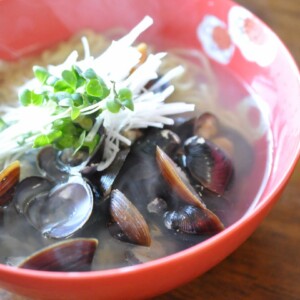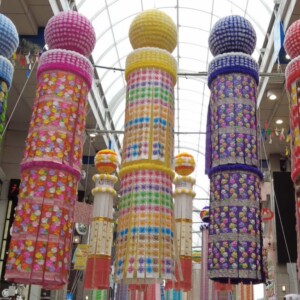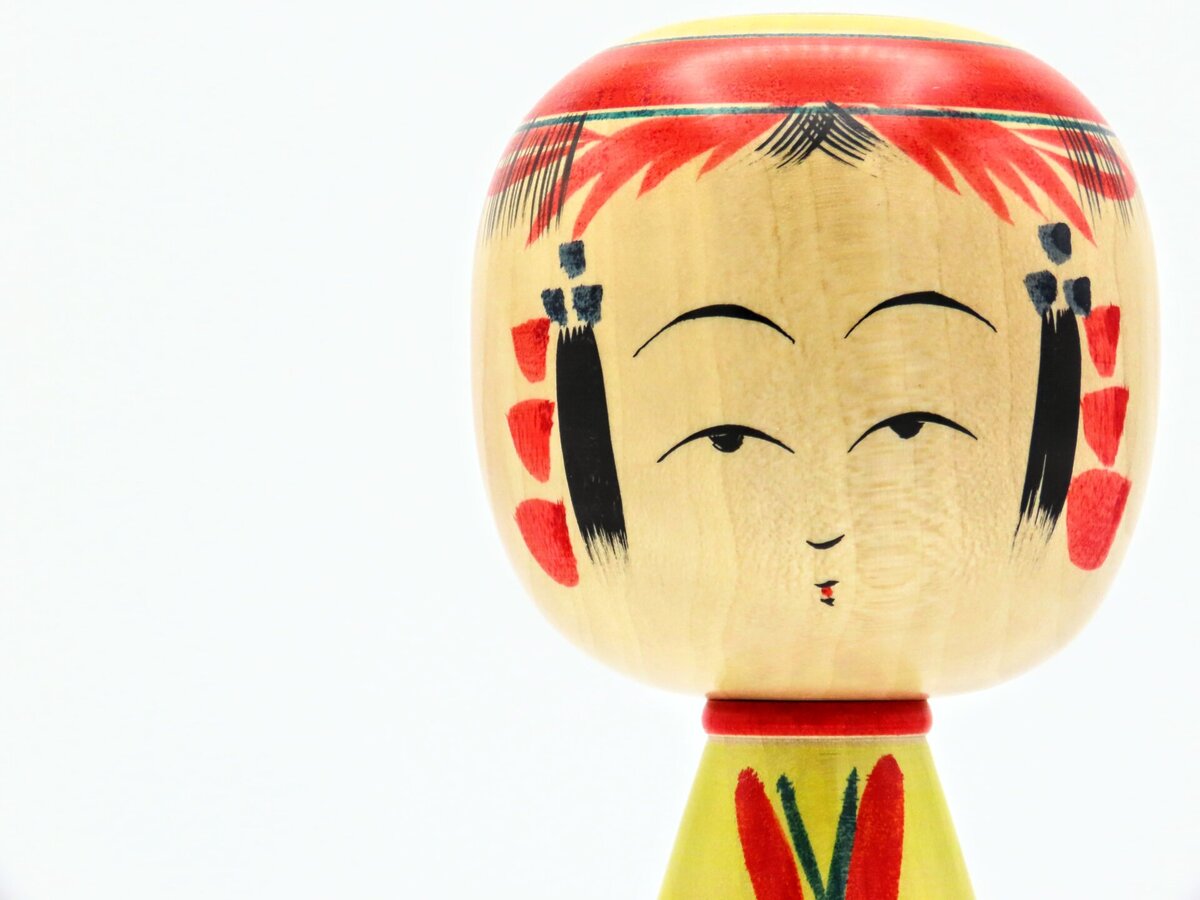
Yajiro Kokeshi – Traditional Kokeshi developed around Kamasaki Onsen, the home of the Shiraishi Katakura family [Miyagi Prefecture]
table of contents
Kokeshi dolls are one of the traditional crafts representing the Tohoku region .
It is a craft that has spread over a fairly wide area, with at least one unique lineage existing in every prefecture in Tohoku.
we will take a closer look at the ``Yajiro Kokeshi'', which was developed around the Yajiro village in Shiroishi City, Miyagi Prefecture
What is Kokeshi?
Kokeshi dolls are made by craftsmen called kijishi who lived mainly in mountain villages and 's wheel to make bowls and trays for a living. It is a wooden toy that was made to be sold as a souvenir to tourists in hot spring resorts.
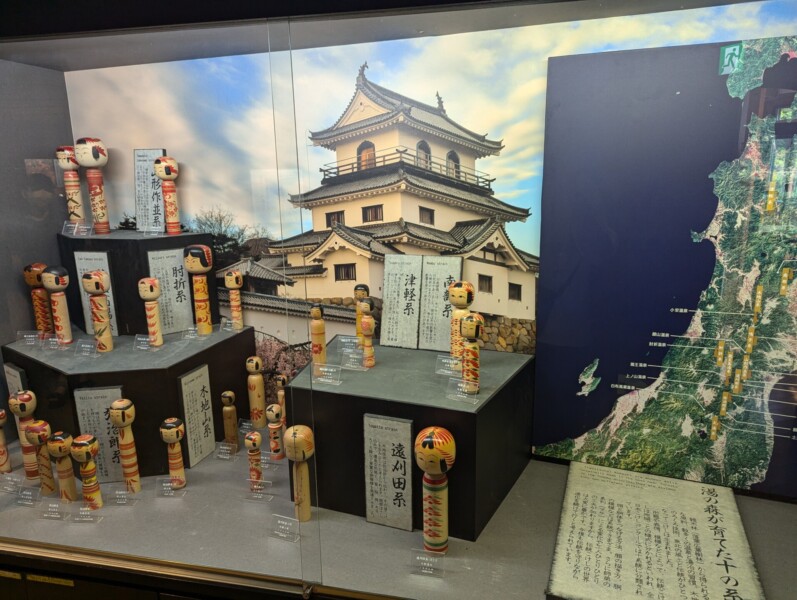
It is said to have originated around the end of the Edo period, and is generally divided into the following 12 strains based on production area and characteristics.
- Tsugaru type (around Hirosaki City and Kuroishi City, Aomori Prefecture)
- Southern type (around Hanamaki City, Iwate Prefecture)
- Kiji Mountain Range (around Yuzawa City, Akita Prefecture)
- Naruko type (around Naruko Onsen, Osaki City, Miyagi Prefecture)
- Sakunami system (around Sakunami Onsen, Sendai City, Miyagi Prefecture)
- Togatta system (around Togatta Onsen, Zao Town, Katta District, Miyagi Prefecture)
- Yajiro type (around Kamasaki Onsen, Shiroishi City, Miyagi Prefecture)
- Hijiori series (around Hijiori Onsen, Okura Village, Mogami District, Yamagata Prefecture)
- Yamagata series (around Yamagata City, Yamagata Prefecture)
- Zao Takayu system (around Zao Onsen, Yamagata City, Yamagata Prefecture)
- Tsuchiyu system (around Tsuchiyu Onsen, Fukushima City, Fukushima Prefecture)
- Nakanosawa series (around Nakanosawa Onsen, Inawashiro-cho, Yama-gun, Fukushima Prefecture)
Various names and their origins
Kokeshi dolls have many other names, including , Dekoroko , Kogesu , Kiboko , Kogehoko , Kinakinabokko , Odekosama
Where did the name "kokeshi" originally come from? There are various theories about this,
- Transformation of the pest control toy to prevent epidemics
- Changes in burnt (piece of wood) cheeks (doll)
- Koge (wood cutting) meaning of shi (child)
- The accent of a small doll called okeshi that was popular in the Edo period.
There are multiple theories such as. Each theory has a certain level of persuasive power, and the aliases mentioned above are thought to have evolved by adding local accents to the names based on their respective origins.
In this way, Kokeshi dolls were called by completely different names in various places, but in 1940 (Showa 15), Kokeshi craftsmen and enthusiasts attended the ``1st Local Gathering - Naruko Festival'' A number of people related to the festival got together and decided to unify the word ``kokeshi'' into three hiragana letters, and from then on it has been called ``kokeshi'' in all regions.
Yajiro-style kokeshi dolls developed around Kamasaki Onsen
the Yajiro-style kokeshi dolls were born in the Hachinomiya Yajiro district of Fukuoka, Shiroishi City, Miyagi Prefecture, and are thought to have developed from the mid-Edo period to the end of the Edo period, when the number of people visiting Kamasaki Onsen for hot springs increased. .
Women from the Yajiro village carried kori on their backs and sold kokeshi dolls and other wooden products such as bowls and trays to bathers at Kamasaki Onsen, which at the time was known as ``Kamasaki Akinai''. It was called.
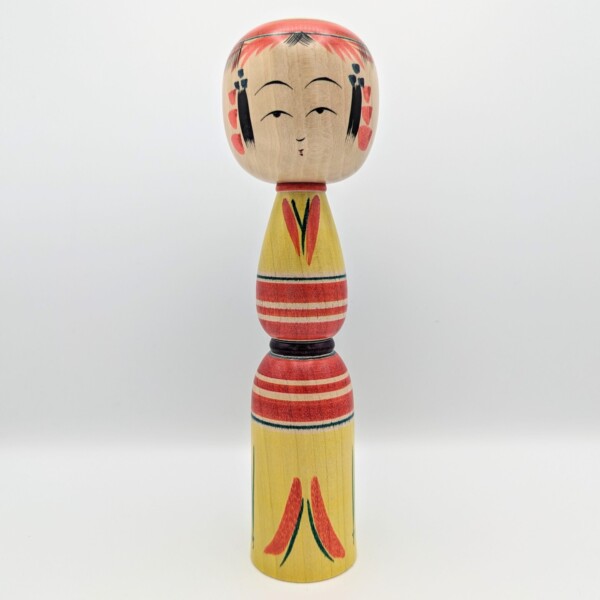
Its distinctive features include the potter's wheel pattern on the head and body, and the collar and sleeve patterns that make it look like it's wearing a kimono.
Kokeshi dolls often come in colorful colors such as yellow, light blue, and purple, and they often have feminine features, such as a waist in the torso.
In 1981, it was designated as a national traditional craft as Miyagi Traditional Kokeshi (Yajiro type).
Kokeshi doll spots around Yajiro village
Yajiro Village is located further along the Minami Zao Shiroishi Line (Prefectural Route 254) towards Zao, past Kamasaki Onsen.
Yajiro Kokeshi Village
Yajiro Kokeshi Village is a facility located within the Yajiro village.The first floor has an exhibition and reference room related to kokeshi dolls, and the second floor has a sales office where works by Yajiro kokeshi craftsmen and others are sold, as well as a space where you can try your hand at painting kokeshi dolls.
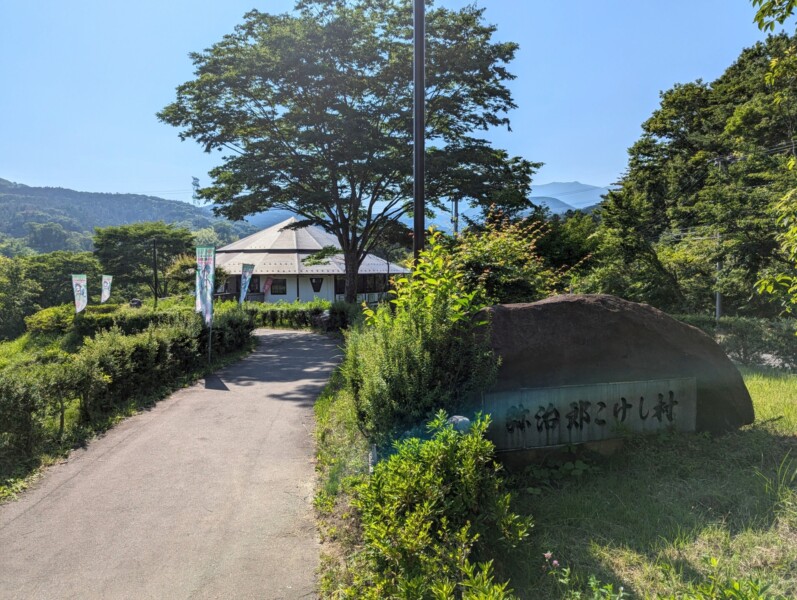
The second floor is directly connected to the parking lot, so if you look from the second floor, you will descend to the first floor.
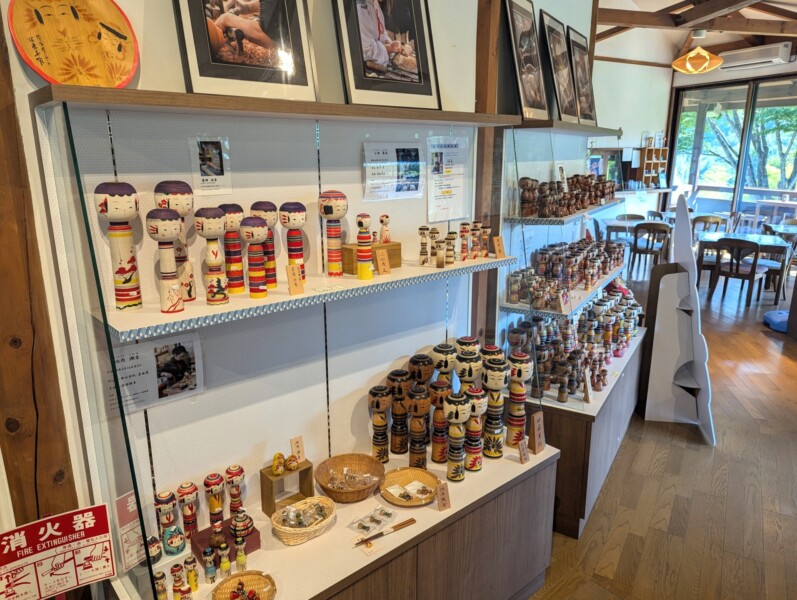
Yajiro-style kokeshi dolls are sold by craftsman.
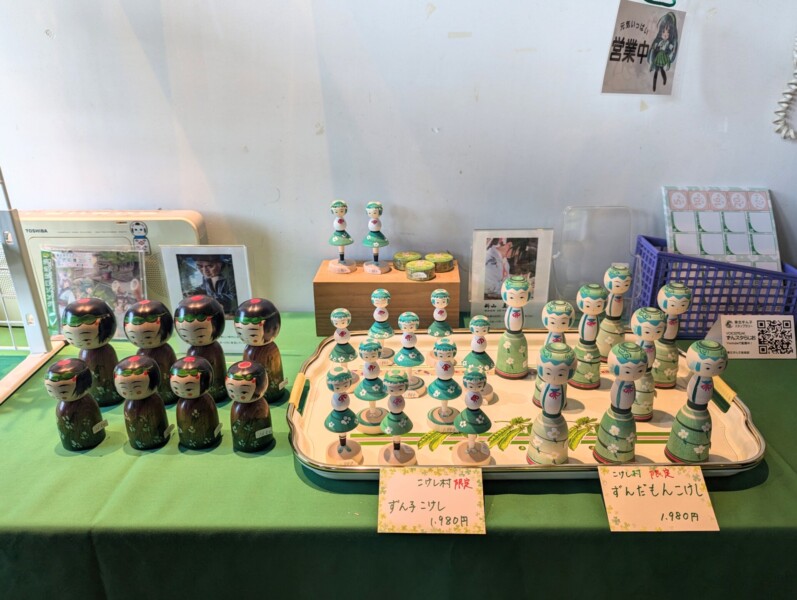
There are also limited edition Kokeshi dolls that can only be purchased here. There were also collaboration products with Sendai's famous zunda.
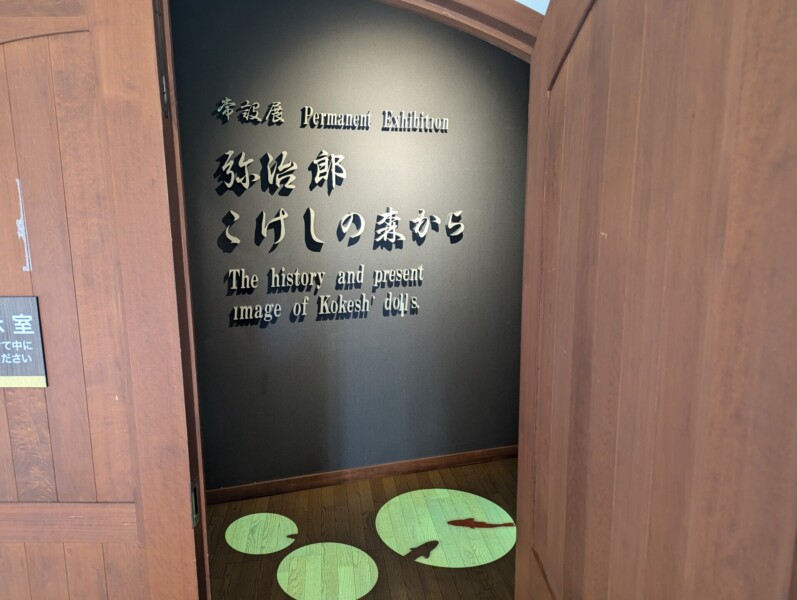
On the first floor, there is a permanent exhibition of Yajiro Kokeshi dolls. There is also an open exhibition room, and the exhibits here seem to change depending on the season.
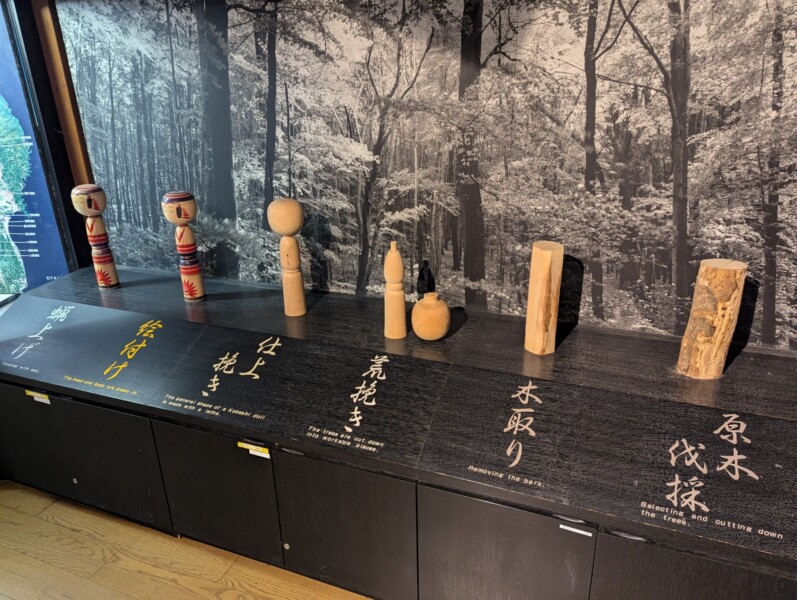
You can learn about the kokeshi doll production process and the history of Yajiro Village.
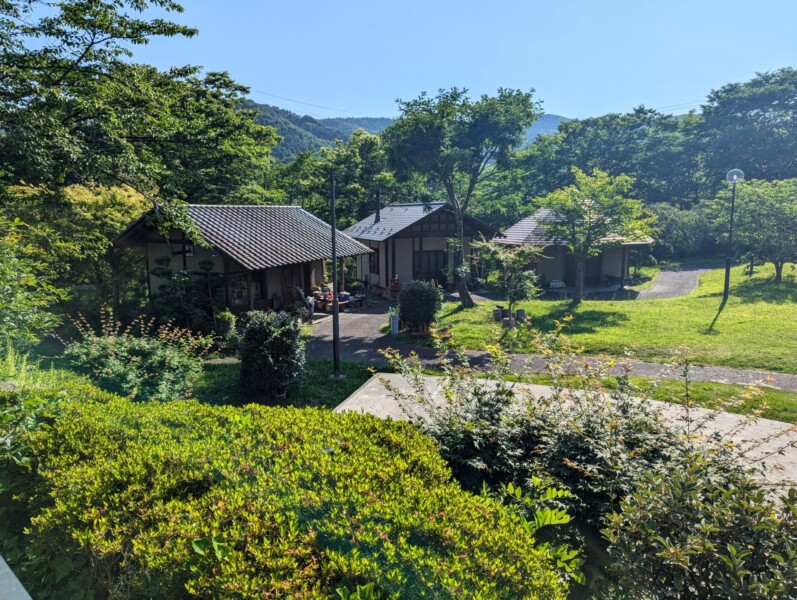
There is a workshop and workshop in the courtyard, where you can freely observe local and young kokeshi makers making their own kokeshi dolls.
At the back of the courtyard is Onomiya Suikyo Shrine, which enshrines Imperial Prince Koretaka Shinno, who is said to be the inventor of the potter's wheel and is said to be the father of woodturners. Also known as Kokeshi Shrine) is adjacent to it.
Yajiro Kokeshi Village<Information>
- Name: Yajiro Kokeshi Village
- Address: 72-1 Yajiro Kita, Fukuoka Hachinomiya, Shiroishi City, Miyagi Prefecture, 989-0733
- Phone number: 0224-26-3993
- Official URL: https://yajirou.thebase.in/
Google Map
Yajiro Village, the birthplace of Yajiro Kokeshi dolls
As you head towards Yajiro Kokeshi Village on the Minami Zao Shiroishi Line (Prefectural Route 254), you will find shops and residences that are believed to be the workshops of Yajiro Kokeshi craftsmen scattered along the way. the Yajiro Village, which is the birthplace of Yajiro Kokeshi dolls .
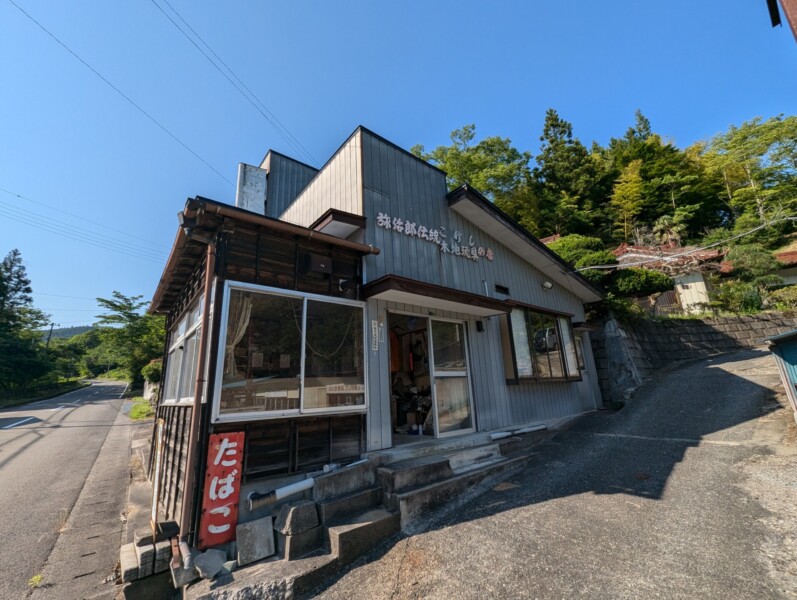
This place first appeared in history in the Meireki era (1640), when the name of the mansion was written as "Yachiro" in a section of Hachinomiya Village (present-day Hachinomiya, Fukuoka, Shiroishi City). It seems to be the first.
Historically, it is thought that it was established by clearing the forest in the early Edo period.
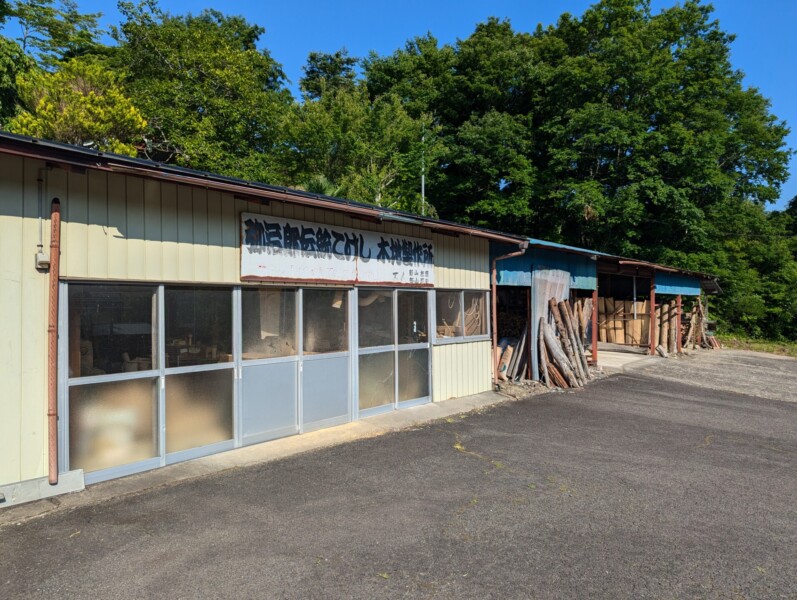
In the middle of the Edo period, he was hired as a footman for the Shiraishi Katakura family, a vassal of the Date family, and established himself as a permanent woodturner, living as a half-farmer and half-worker, farming and turning wood.
The ``Kamasaki business'', in which wooden products were sold to visitors at Kamasaki Onsen, began to take place around this time and became popular from the end of the Edo period to the Meiji period.
Yajiro Village <Information>
- Name: Yajiro Village
- Address: Yajiro Hachinomiya, Fukuoka, Shiroishi City, Miyagi Prefecture, 989-0733
- Phone number: -
- Official URL: -
Google Map
Kamasaki Onsen
This hot spring town in Shiroishi City is said to have opened in 1428, and there are currently five inns scattered around.
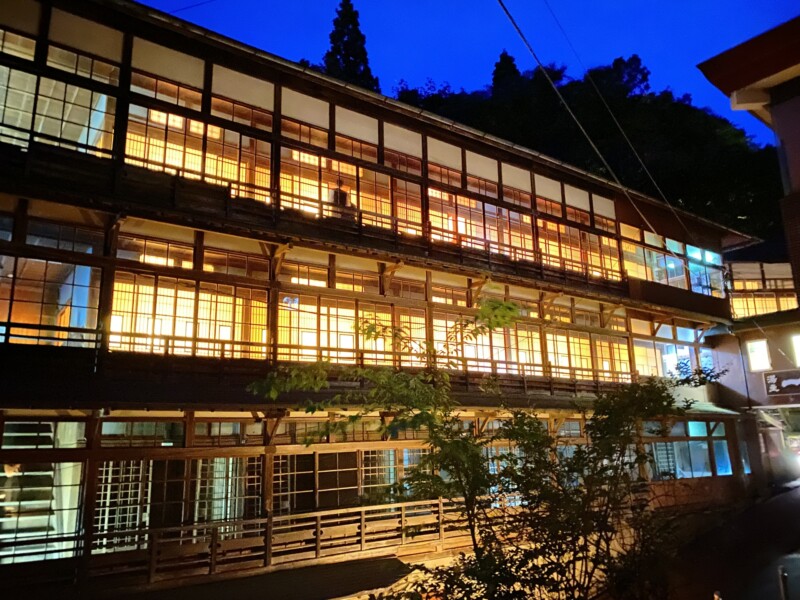
It is said that the local people dug up the hot springs with the tip of a sickle while cutting grass, hence the name. It is said to be a ``sickle point for wounds'' is also famous as Ou's medicinal hot spring
The people of Yajiro Village had been doing the ``Kamasaki Business'' for a long time, but the history of the ``Kamasaki Business'' seems to have died out in 1968, when the area changed from a hot spring resort to a tourist hotel.
Kamasaki Onsen<Information>
- Name: Kamasaki Onsen
- Address: Fukuoka Kuramoto, Shiroishi City, Miyagi Prefecture 989-0231
- Phone number: -
- Official URL: Shiroishi Sightseeing Navigation – Kamasaki Onsen














![Kijiyama Kokeshi - Akita Traditional Kokeshi with a distinctive expression that gives you a sense of sorrow [Akita Prefecture] Kijiyama Kokeshi's expression](https://jp.neft.asia/wp-content/uploads/2025/01/IMG_1792-150x150.jpg)
![Togata Kokeshi - Traditional Kokeshi developed at Togata Onsen in Miyagi Zao [Miyagi Prefecture] Togata Kokeshi's expression](https://jp.neft.asia/wp-content/uploads/2024/09/IMG_1784-150x150.jpg)
![Naruko Kokeshi - Traditional Kokeshi developed at Naruko Onsen, the three famous hot springs in Oshu in Miyagi [Miyagi Prefecture] Naruko Kokeshi's expression](https://jp.neft.asia/wp-content/uploads/2024/10/IMG_1783-150x150.jpg)
![Sakunami Kokeshi - Traditional Kokeshi developed in Sakunami Onsen in Sendai and has a history of over 150 years [Miyagi Prefecture] The expression of the samun kokeshi](https://jp.neft.asia/wp-content/uploads/2025/03/IMG_2161-150x150.jpg)
![Nakanosawa Kokeshi - Traditional Kokeshi that has evolved after breaking from the reputation of being a "part of the Doyu" [Fukushima Prefecture] Nakanosawa Kokeshi's expression](https://jp.neft.asia/wp-content/uploads/2024/10/IMG_1785-150x150.jpg)
![Doyu Kokeshi - Traditional kokeshi originating from "Doyu Onsen", which is said to be the birthplace of the three major kokeshi at Tohoku [Fukushima Prefecture] The expression of the Doyu Kokeshi](https://jp.neft.asia/wp-content/uploads/2024/10/IMG_1799-150x150.jpg)
![Nanbu Kokeshi - A slightly unusual traditional kokeshi with a distinctive characteristic [Iwate Prefecture] The expression of the southern kokeshi](https://jp.neft.asia/wp-content/uploads/2024/11/IMG_1788-150x150.jpg)
![Zao Takayu Kokeshi - Traditional Kokeshi developed in Zao Onsen, following the trends of Doyu and Togarida [Yamagata Prefecture] Zao Takayu Kokeshi's expression](https://jp.neft.asia/wp-content/uploads/2024/11/IMG_1781-150x150.jpg)
